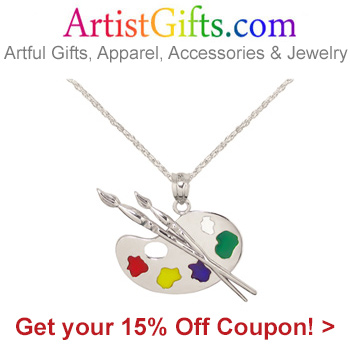by Carolyn Edlund
Want to improve your online art sales? Avoid these mistakes that can cost you opportunities and customers.

Misunderstanding your target audience
If you are unclear who your ideal customer is, then you will have difficulty constructing a marketing message on your website that resonates with shoppers. You can be sure of one thing, though: when it comes to marketing and sales, it’s all about the customer.
Get in front of the public and do some “retail research” so that you can come to know the type of people who respond to your work and why they feel a connection with what you make. Then, write a brand story that reflects what you do, and how it resonates with your ideal customer. Reinforce this through the language you use on your website to attract the customers you want.
Insufficient marketing activities
It’s not uncommon for artists to complain that they do best in the studio and are not comfortable with marketing. Yet, if you want to sell your work, you must take action to promote your work and gain exposure. To do this most effectively, you should create a plan.
Do you want to use social media? Use those platforms that you like best and will stick with; you don’t have to do everything. Likewise, you may choose to blog or not, depending on your preference. Your best strategy for marketing is to build that all-important email list, and to reach out to prospects on a monthly basis.
Low traffic volume
If few people come to your website or online store, there aren’t many chances to make a sale. Install Google Analytics on your site, or use analytics on the platform that hosts your website to gather information. Find out how many visitors are coming, and which sites are sending them to you.
Marketing activities will help traffic, as will gaining backlinks from other websites, including social media sites. Search engine optimization and updating your website with new content will help drive traffic from visitors using search terms that match what you do.
Confusing navigation
Keep navigation simple on your website and indicate clearly how your purchasing process works. If you wish to sell your work, you need a shopping cart function—this is a basic. Then, enable customers to go through the shopping and purchasing process easily. When buyers have to jump through hoops to find the price, description, or information about shipping, they tend to abandon the shopping cart. This is a major source of lost online revenue.
Lack of trust
Your website should display professional presentation, and function smoothly. Customers need a comfort level to decide to go through with a purchase. Your contact information (email address and phone number) should be prominent on your site. In addition, the terms need to be straightforward. Do you have a secure checkout process? A satisfaction guarantee? A return policy? These all add to the level of trust needed to close the deal. Here is where an FAQ page comes in handy, to answer questions in one place.
Make changes now
The sooner you update and improve the functionality, appearance and professionalism of your art website, the better. When people view your work in person, they will often search for your website to learn more. You will link to your website in follow up emails and messages, for the purpose of moving the selling process forward and making sales. An impressive website will boost your credibility, and increase the appeal to your ideal collector.


Speak Your Mind